Every tap, swipe, or scroll presents an opportunity — or a risk. Mobile friction is an obstacle that stops a seamless experience. Friction disrupts a user’s journey and can lead to lost business opportunities.
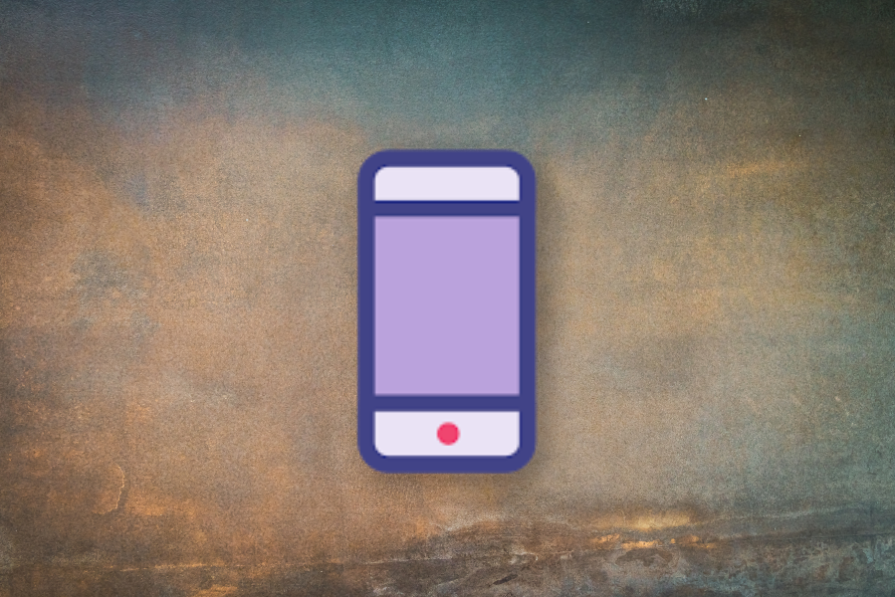
Reducing friction isn’t just about fast load times and good UX though It’s also about understanding user behavior. Identifying their frustrations and improving interactions can keep users engaged and delighted.
Keep reading to learn about mobile-first design, common sources of friction, and practical tips for reducing mobile friction.
You may think design should focus on the desktop, but that’s not always the case.
David Cost, VP of Digital and Ecommerce at Rainbow Apparel Co., says mobile is the default for most users. “For some people, regardless of their incomes, their only computing device is their phones,” he said.
Mobile is the most accessible device for people. Statista shows that in Q3 2024, 98 percent of global users accessed the internet by phones. A far cry from the 58.3 percent of users that use a computer.
You may think your audience is an exception or that your mobile experience is fine the way that it is, but you should challenge this assumption. It may turn out that the whole mobile experience needs to change for users to adopt it.
Charlie Kaplan, VP Product at Audiomack, originally thought that artists wouldn’t be interested in uploading their music via phone. “In my world, when I finish a piece of music, it’s sent to me in an email, and I upload it to a laptop,” said Kaplan. “Uploading from my phone felt like such a lightweight relationship to me. That was a total perceptual misunderstanding of how people make music.”
It turns out many artists make music strictly on their phones with no instruments. When the creator app was launched, it became hugely popular. 80-90 percent of user-uploaded music came from the mobile app.
“I’m grateful that we were able to stay open to this idea and look beyond ourselves, because otherwise, we would have missed out on such a huge opportunity,” said Kaplan. He also learned valuable lessons on who users were which helped inform Audiomack’s product strategy.
For product managers, you have to meet users where they are. Whether that’s an app or a website, you should challenge your assumptions on what your users want. You may find a great way to engage users.
It’s basic hygiene to ensure an error-free and streamlined experience on mobile devices. However, there are many things that could go wrong. When talking about friction-free mobile experiences, product leaders highlighted these issues the most:
Mikal Lewis, Executive Leader, Digital Product Management at Whole Foods Market, presents the paper cuts versus cockroaches theory to manage friction and bad hygiene. “The idea is that (a user) can have quite a few paper cuts before (they) actually start to feel them,” Lewis said.
In contrast, if you were at a five-star restaurant and saw a cockroach in the kitchen, you would immediately leave. It only takes one cockroach to lose a customer.
“You’re critiquing the experience and looking for moments where a single incident actually changes the customer experience or their future outcomes. That’s what creating a product experience is all about – bringing those instances down to zero.”
Now that you have a sense of where friction can come from, consider these strategies to create an error-free mobile experience:
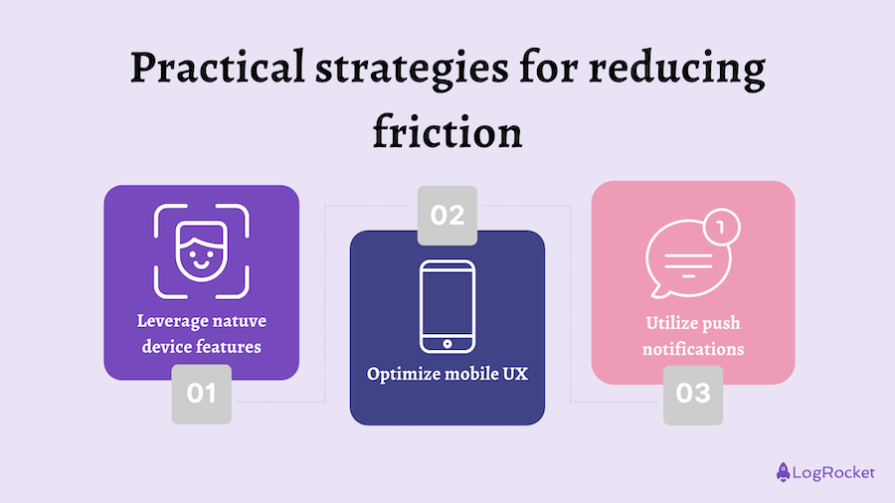
Phones are powerful devices. They have a lot of features, and you can utilize them to create better mobile experiences. Here are a few examples:
“Our business is very heavily reliant on location services,” said David LoPresti, Director, U-Haul Apps at U-Haul. “We’re reliant on photos and customers documenting the status of their equipment. Understanding and changing those processes to leverage native capabilities has made a huge difference.”
Victoria Katsarou, Vice President eCommerce, M.A.C. North America at Estée Lauder Companies, thinks it’s good practice to review mobile UX first before desktop. “If you lead with desktop, you’re going to get all your conversions with desktop. But as more traffic comes through mobile, increasing your mobile conversion by a little bit can bring a lot more revenue.”
Katsarou goes on to mention that placement matters on mobile because there’s a smaller screen size. You need to ensure that new buttons, modules, and other elements are placed in the right spot. It may seem simple, but they’re important choices for conversion.
One benefit of mobile is the ability to send push notifications. It opens up a new communication channel that you can’t get with a desktop. Cost points out that someone who has downloaded your app and, on Apple devices, taken the step of enabling notifications is already an engaged user.
“Having the option to send a message — whether it’s a marketing initiative or transactional message about somebody’s order — via push is super valuable,” said Cost. “It’s the number one reason and the way that we justify the expense of having apps.”
However, push notifications can get overwhelming for users without a good strategy.
Customers tend to care about transactional notifications, like messages about when their food order is arriving. These notifications can foster trust and keep users informed.
Marketing notifications are a bit more tricky. They need to provide value and maybe some entertainment to users. Otherwise, users may be inclined to turn them off or just ignore them.
One strategy is to give users options to manage their notifications. For example, Uber push notifications have categories like promotions, ride updates, and other alerts. Users can select which notifications they want to receive which can boost engagement and reduce alert fatigue:
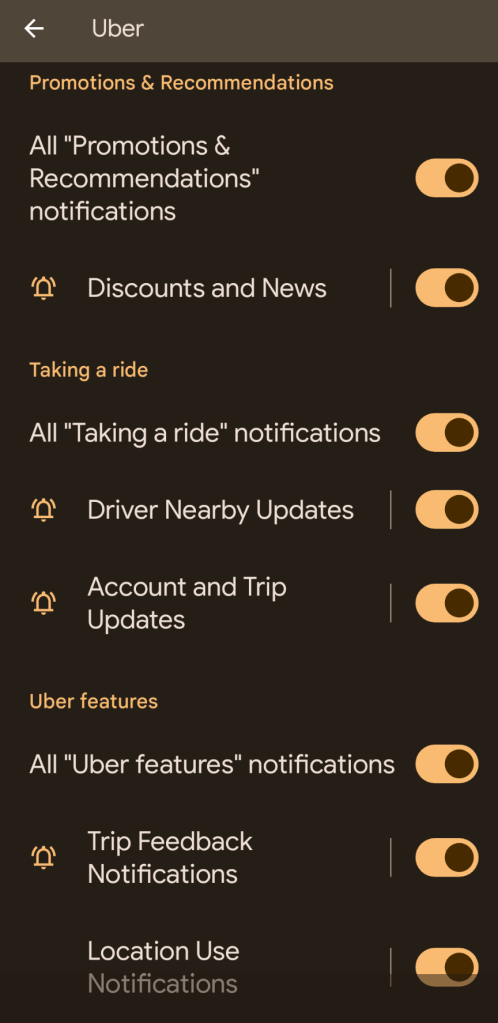
Even the most experienced product managers are surprised by how users interact with a product. You may have a strong hypothesis, but you never know how a user will respond until you put it out publicly.
When an error occurs, you need to have data to understand why it failed. It could be a UX problem or it could be that the feature didn’t match what users wanted. You need data to learn from an experiment and reiterate from an error.
Implementing session replay, heat mapping, and other analytic tools can help observe user behavior. Qualitative feedback can also provide unique insights into how users interact with your product.
Mobile is the dominant interface for most users. They’re engaging with your organization with their phones, and you need to provide mobile experiences with good hygiene.
Without mobile optimization, you may be unable to reach your target audience. Improving mobile UX can help bring in more revenue since you reach more people with less user friction.
Go through every step of the customer journey to ensure it’s optimized for mobile. Reducing friction can engage users and streamline the customer experience. Dive into the data when something is underperforming and take an iterative approach. It’s the best way to create a seamless mobile experience for users.
Featured image source: IconScout
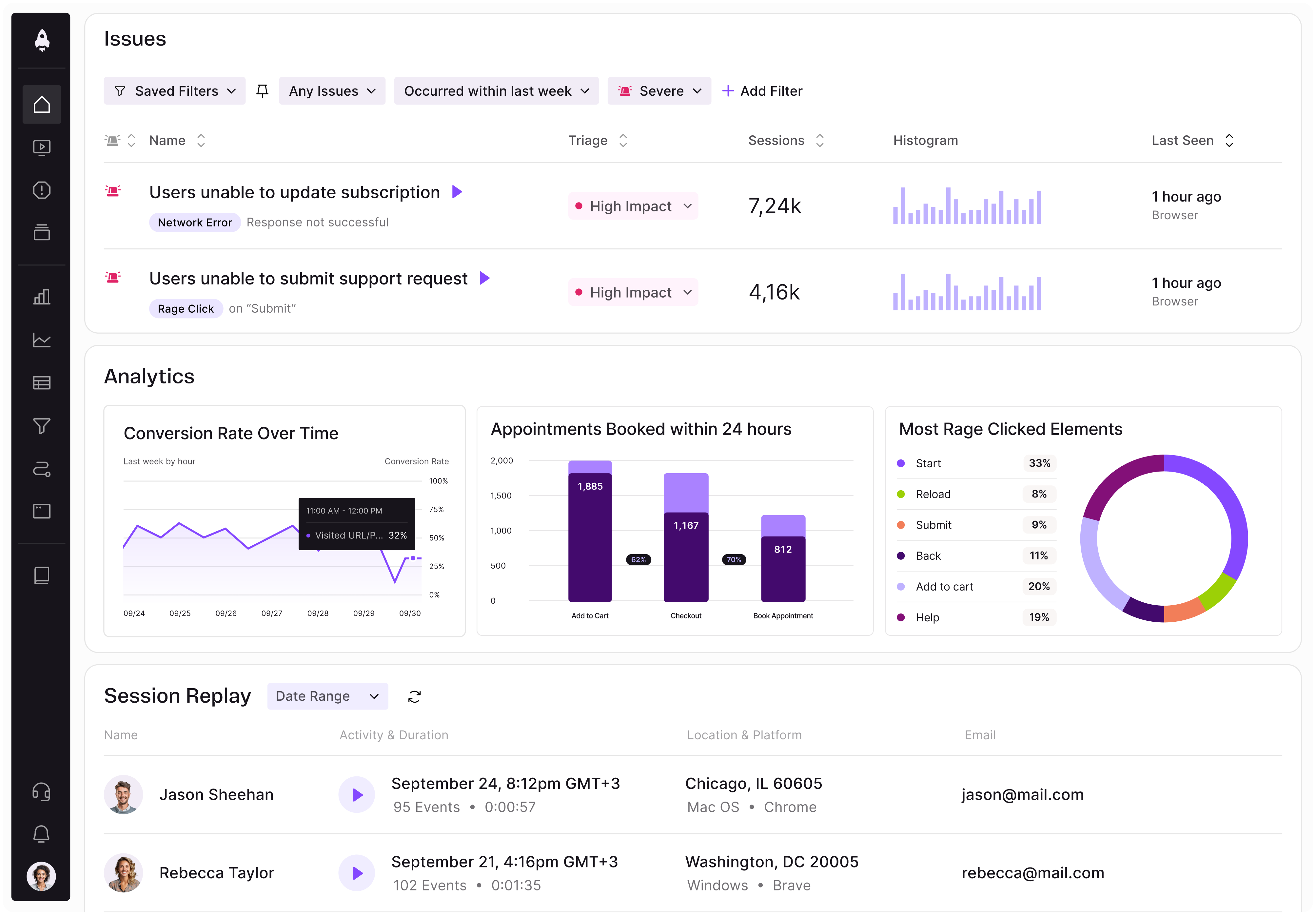
LogRocket identifies friction points in the user experience so you can make informed decisions about product and design changes that must happen to hit your goals.
With LogRocket, you can understand the scope of the issues affecting your product and prioritize the changes that need to be made. LogRocket simplifies workflows by allowing Engineering, Product, UX, and Design teams to work from the same data as you, eliminating any confusion about what needs to be done.
Get your teams on the same page — try LogRocket today.

Promotions depend on proof. This guide shows PMs how to capture wins, feedback, and impact before review season.
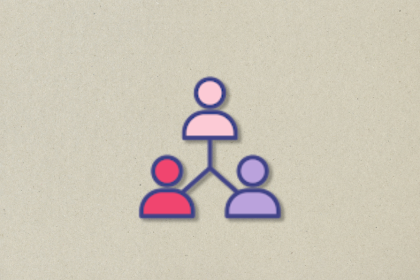
Most teams fail at autonomy. Learn how clear rules help product teams move faster without micromanagement.

A practical framework for PMs to use AI in ideation without sacrificing judgment, strategy, or decision quality.

A practical five minute revenue estimation method to help product managers compare ideas, drop low impact features, and prioritize smarter.